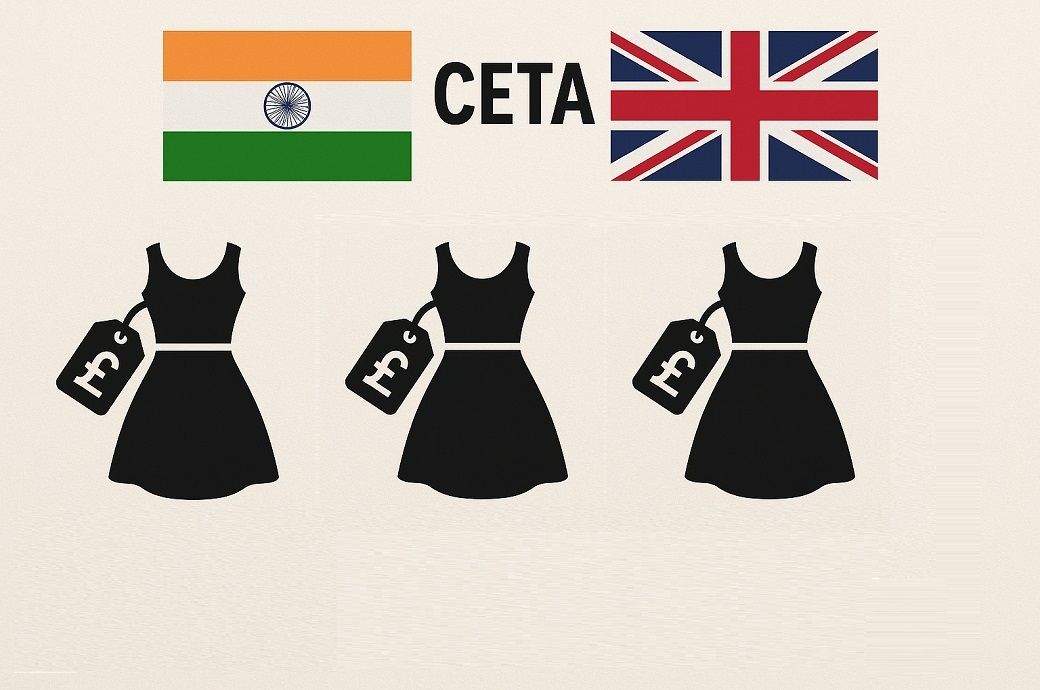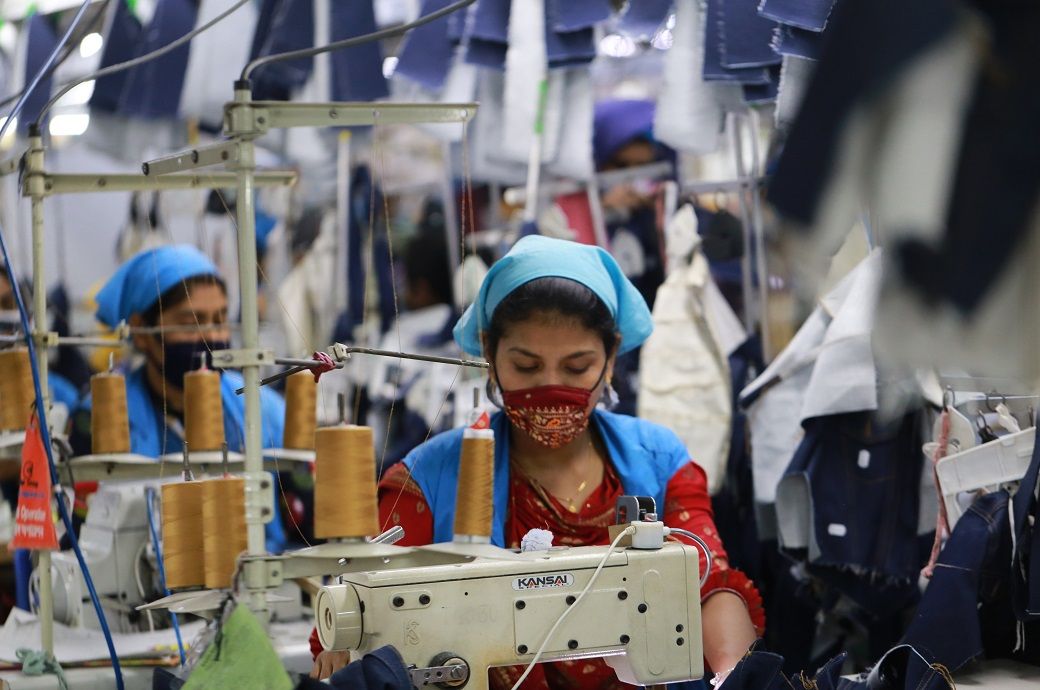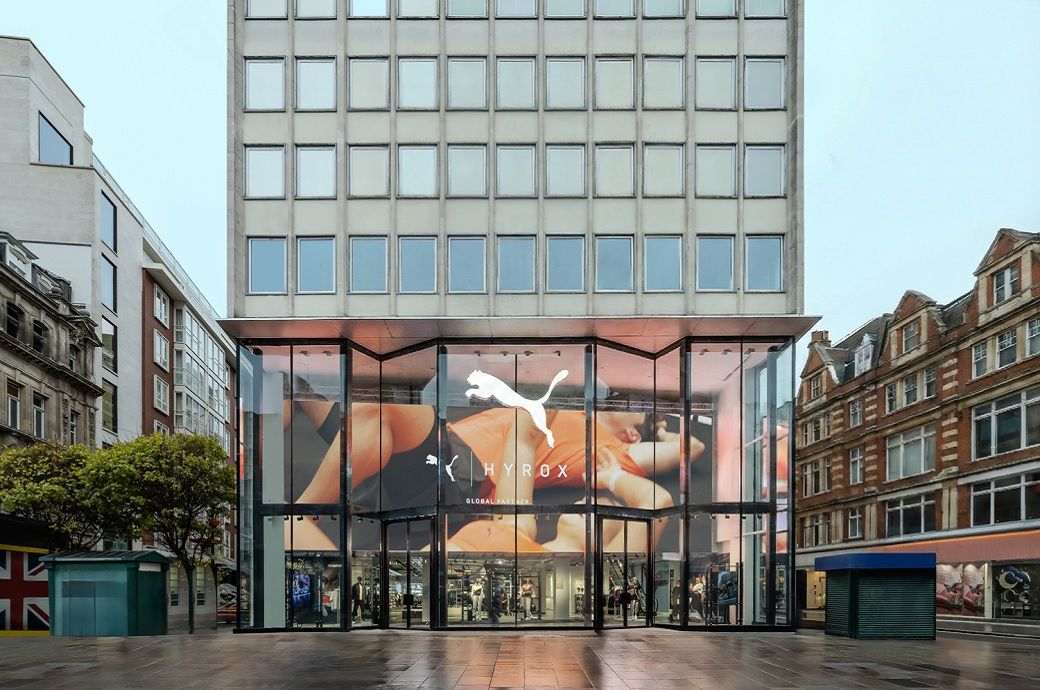
This unprecedented level of market access has been hailed as a landmark in bilateral trade relations and is expected to significantly boost Indian exports, solidify India’s presence in the UK market, and help realise the ambitious target of increasing bilateral trade by $34 billion by 2040, as per reports.
Experts caution about UK buyers’ stringent compliance and sustainability requirements.
The UK’s proposed CBAM, to be initially applied only to carbon-intensive sectors, when it takes effect from January 1, 2027, is widely expected to bring the textile industry under its purview eventually.
If CBAM impacts Indian exports in the future, India will retain the right to formally take up the issue.
Until now, Indian exporters faced a duty disadvantage of 10–12 per cent when competing in the UK, which not only reduced their profit margins but also made it difficult to maintain consistent order flows, forcing them to contend with competitors in an already aggressive global marketplace.
This trade agreement is a win-win for both countries, especially for India’s textile sector, which is heavily export-oriented and a major contributor to employment and foreign exchange earnings. However, stakeholders underlined that to make the most of this new opportunity, Indian exporters will need to carefully navigate the UK’s evolving sustainability and compliance landscape.
“UK buyers have stringent compliance and sustainability requirements,” cautioned Rahul Mehta, chief mentor of the Clothing Manufacturers Association of India (CMAI), in a conversation with Fibre2Fashion.
He emphasised that Indian exporters would have to substantially upgrade their processes to meet evolving expectations, particularly in environmental sustainability, which includes improving operational efficiency and aligning with international standards on carbon emissions, ethical sourcing, water consumption, and waste disposal.
One of the long-term concerns in this direction is the UK’s proposed Carbon Border Adjustment Mechanism (CBAM), felt some.
“Even with FTA tariff cuts, exports could face effective protectionist barriers. Indian exports in textiles, ceramics along with engineering goods, steel etc may be disproportionately hit due to sustainability compliance costs,” opined an industry player.
CBAM is a carbon tax intended to prevent what is known as ‘carbon leakage’—the migration of production to countries with less stringent environmental regulations.
Although CBAM will be initially applied only to carbon-intensive sectors like cement, steel, and aluminium when it takes effect from January 1, 2027, it is widely believed that the labour intensive textile industry could eventually be brought under its purview.
“While the India-UK FTA offers tariff concessions, the CBAM essentially introduces an indirect cost through carbon pricing—it is a case of ‘giving with one hand and taking with the other,’ typical of trade regulation,” said Akhil Sivanandan, CEO and Co-founder of Green Story, speaking to Fibre2Fashion.
He also highlighted the disproportionate impact that CBAM would have on small and medium enterprises (SMEs) within India’s textile sector. According to him, “Currently, most of India’s textile exporters (particularly SMEs) are not well-prepared. There is a significant knowledge gap about carbon foot printing and emissions reporting. This lack of preparedness increases the risk of non-compliance, penalties, or exclusion from future procurement opportunities with UK buyers.”
However, Sivanandan was quick to add that the necessary investment in carbon accounting tools and digital infrastructure should not be viewed merely as a financial burden but rather as a strategic investment in future competitiveness.
He suggested that by adopting practices such as conducting Product Carbon Footprint (PCF) and Life Cycle Assessment (LCA) studies and sharing this verified data through Digital Product Passports (DPPs), Indian exporters could avoid the pitfalls of inflated emissions estimates.
“At Green Story, we have seen that having verified carbon data upfront gives exporters a stronger position when engaging with buyers in regulated markets,” claimed Sivanandan, who went on to explain that CBAM is essentially a non-tariff barrier, and for SMEs that often lack the capital, technical know-how, or human resources to implement carbon tracking systems or cleaner technologies, this creates a considerable disadvantage.
Larger firms with vertically integrated operations may have the capacity to comply, but smaller players could find themselves squeezed out of vital markets. To address these challenges, Green Story has reportedly collaborated with several UK and EU-based brands to deliver training and subsidised access to decarbonisation tools and systems for their Indian supplier networks.
If and when the textile industry is brought under the ambit of CBAM, Indian exporters could face higher compliance costs and in such a scenario, the hard-won advantage of duty-free access under the CETA could be somewhat eroded, felt some industry players.
Meanwhile, India is said to have raised concerns about CBAM during trade negotiations, to which the UK reportedly responded that, since the mechanism is not yet in effect, it cannot be included in the formal text of the trade agreement. However, according to media reports, there was a clear mutual understanding that if CBAM impacts Indian exports in the future, India will retain the right to formally take up the issue.
While the CETA may seem to offer substantial short-term advantages, experts like Sivanandan caution that the focus must also be on the long-term dynamics introduced by policies such as CBAM.
“It is vital that the narrative around CBAM shifts from punitive to preparatory,” he said, arguing that rather than seeing CBAM solely as an obstacle, Indian exporters should approach it as an opportunity to position themselves as global leaders in low-carbon manufacturing.
Sivanandan stressed that timely action from India’s textile sector could transform CBAM compliance into a competitive edge. However, he also warned that this transition cannot be undertaken in isolation—it will require coordinated efforts and collaboration between manufacturers, technology providers, industry associations, and international buyers to build the necessary infrastructure and capacity.
Fibre2Fashion News Desk (DR)






